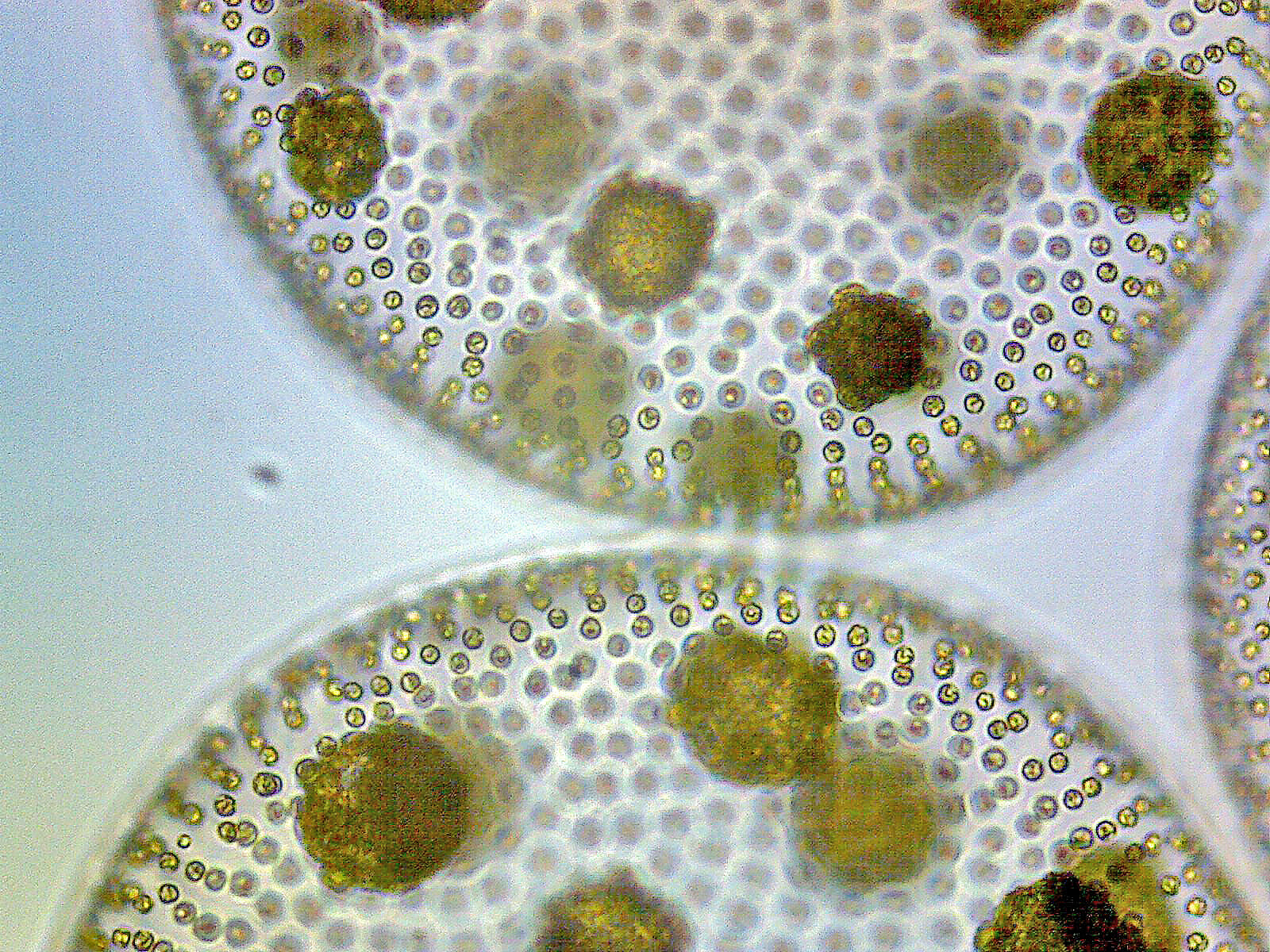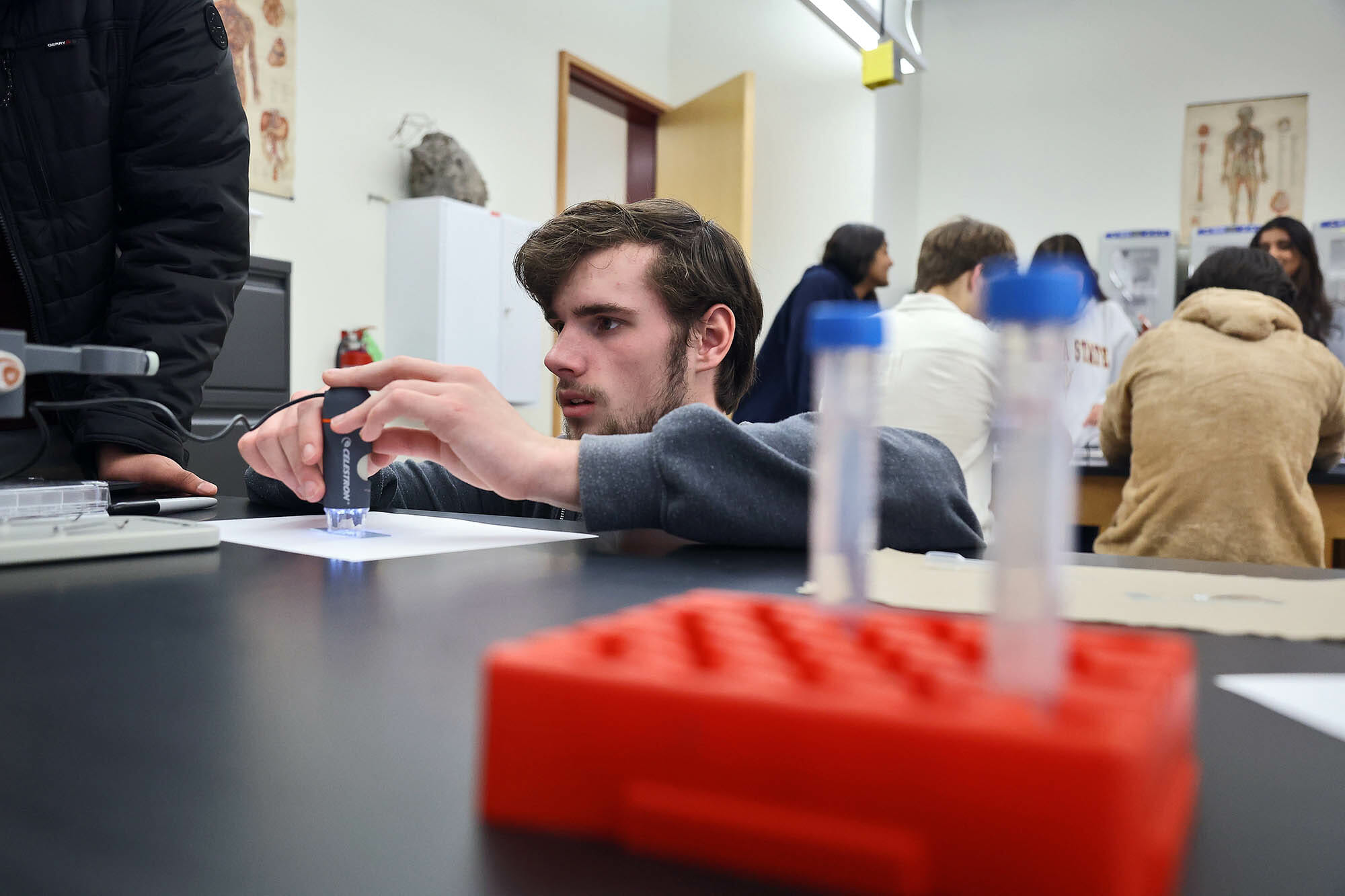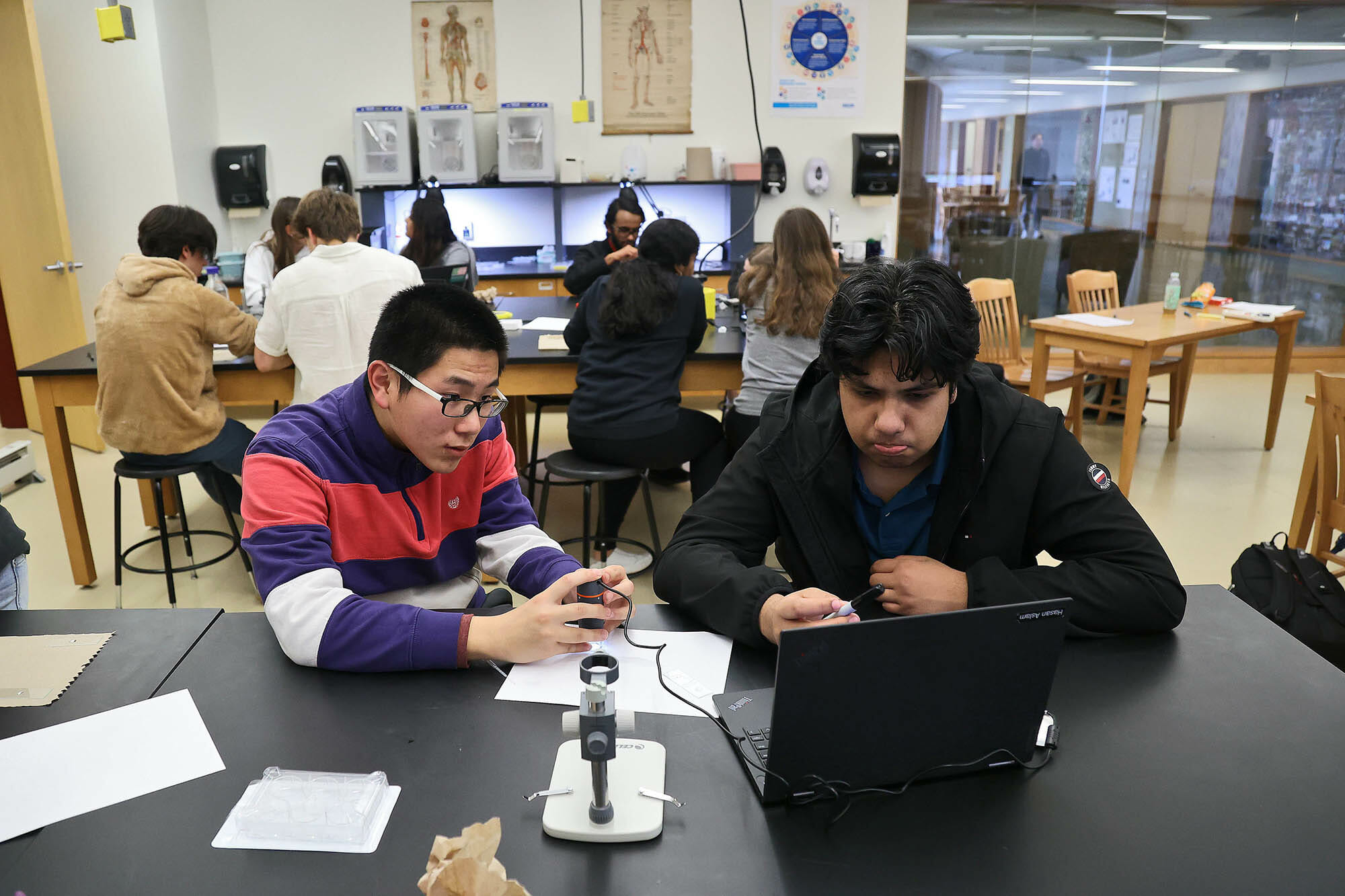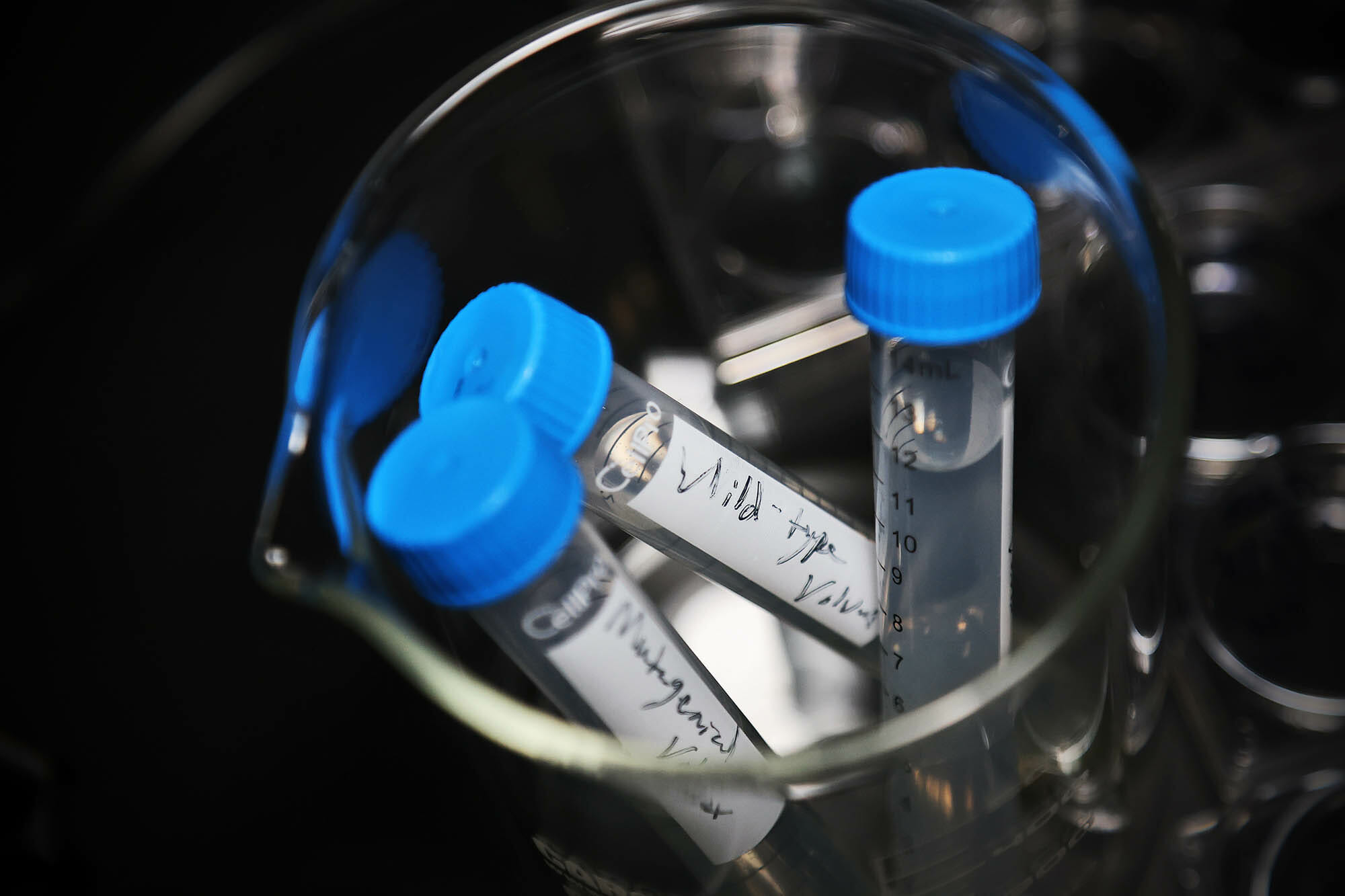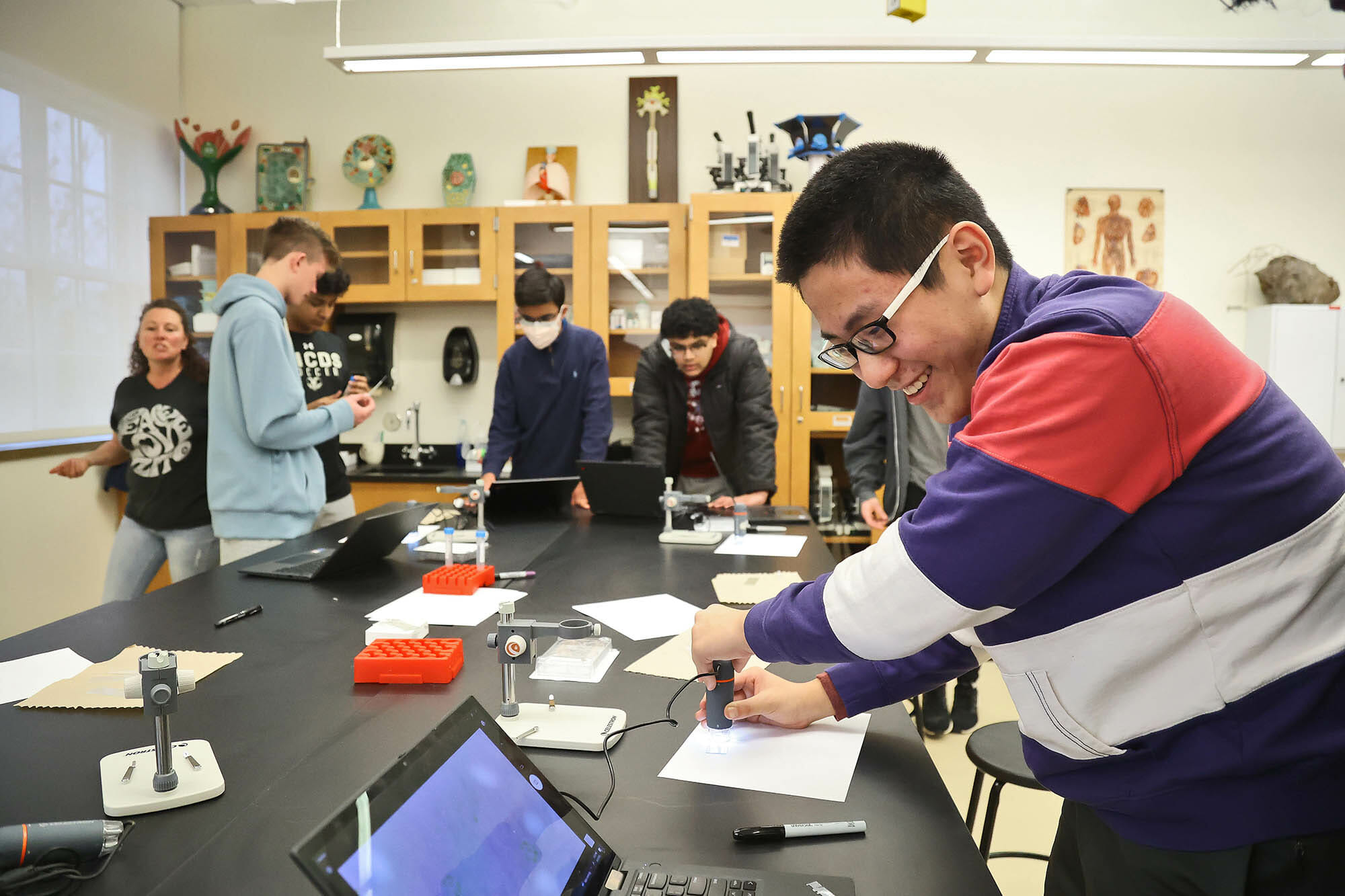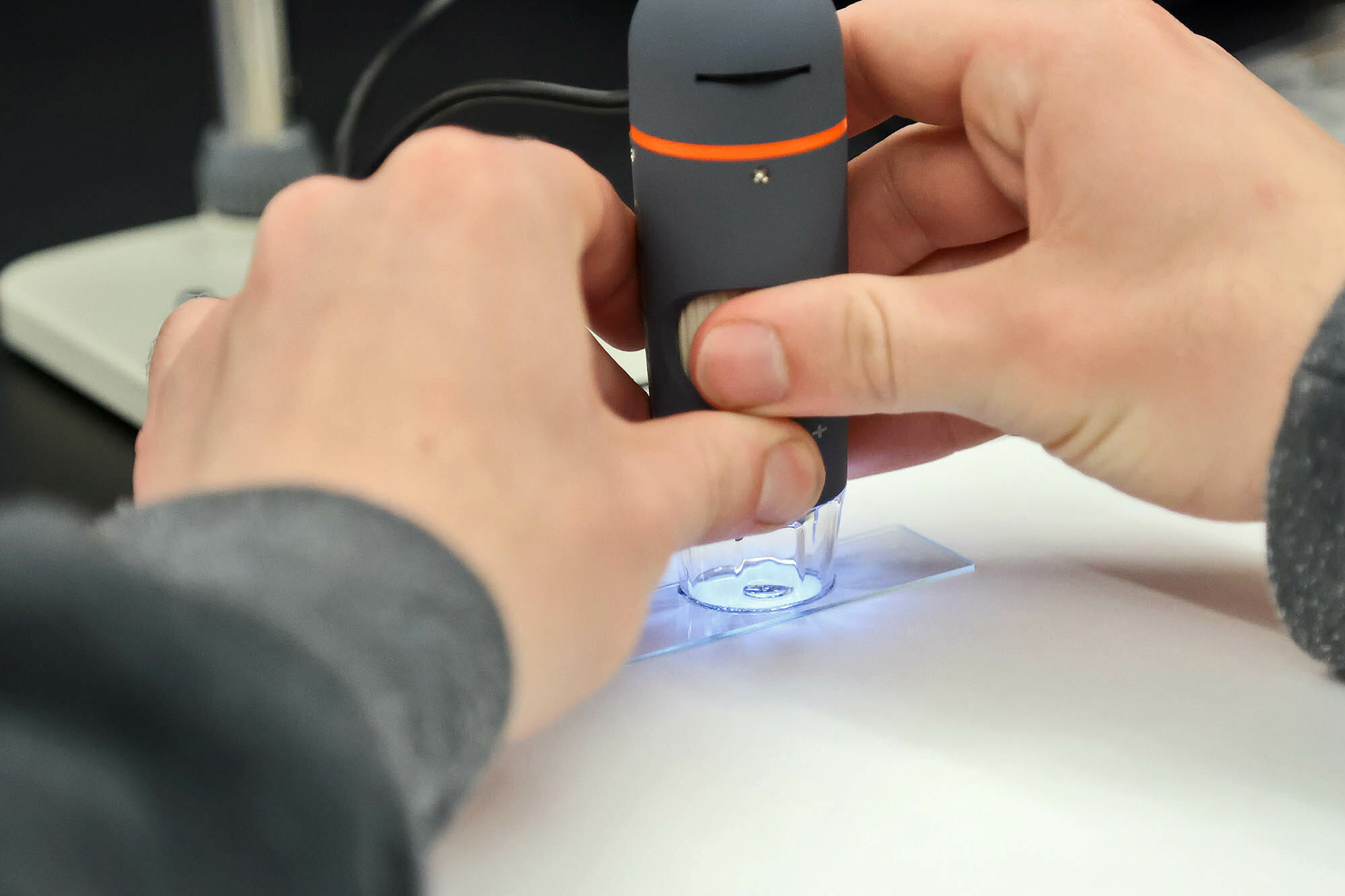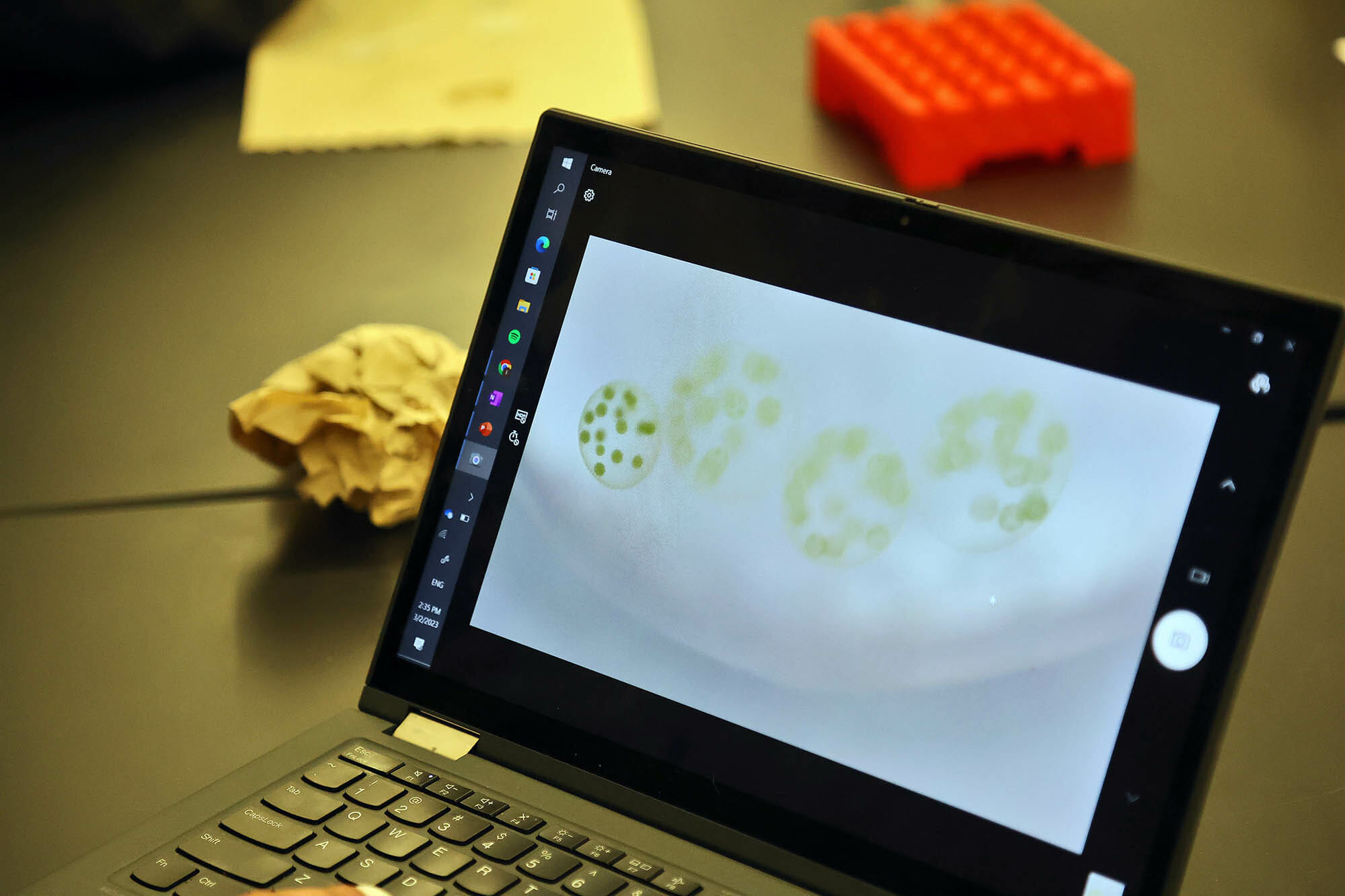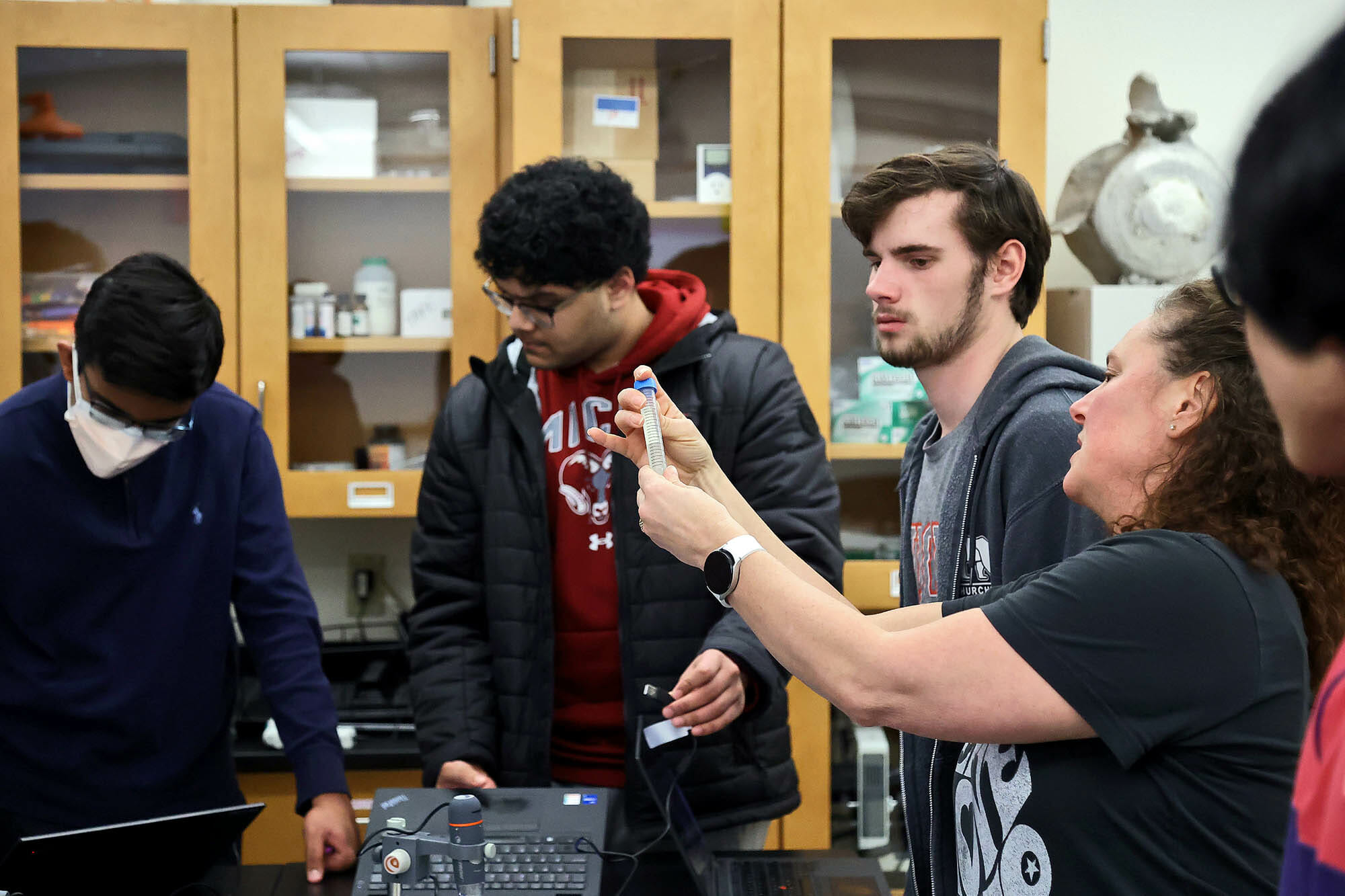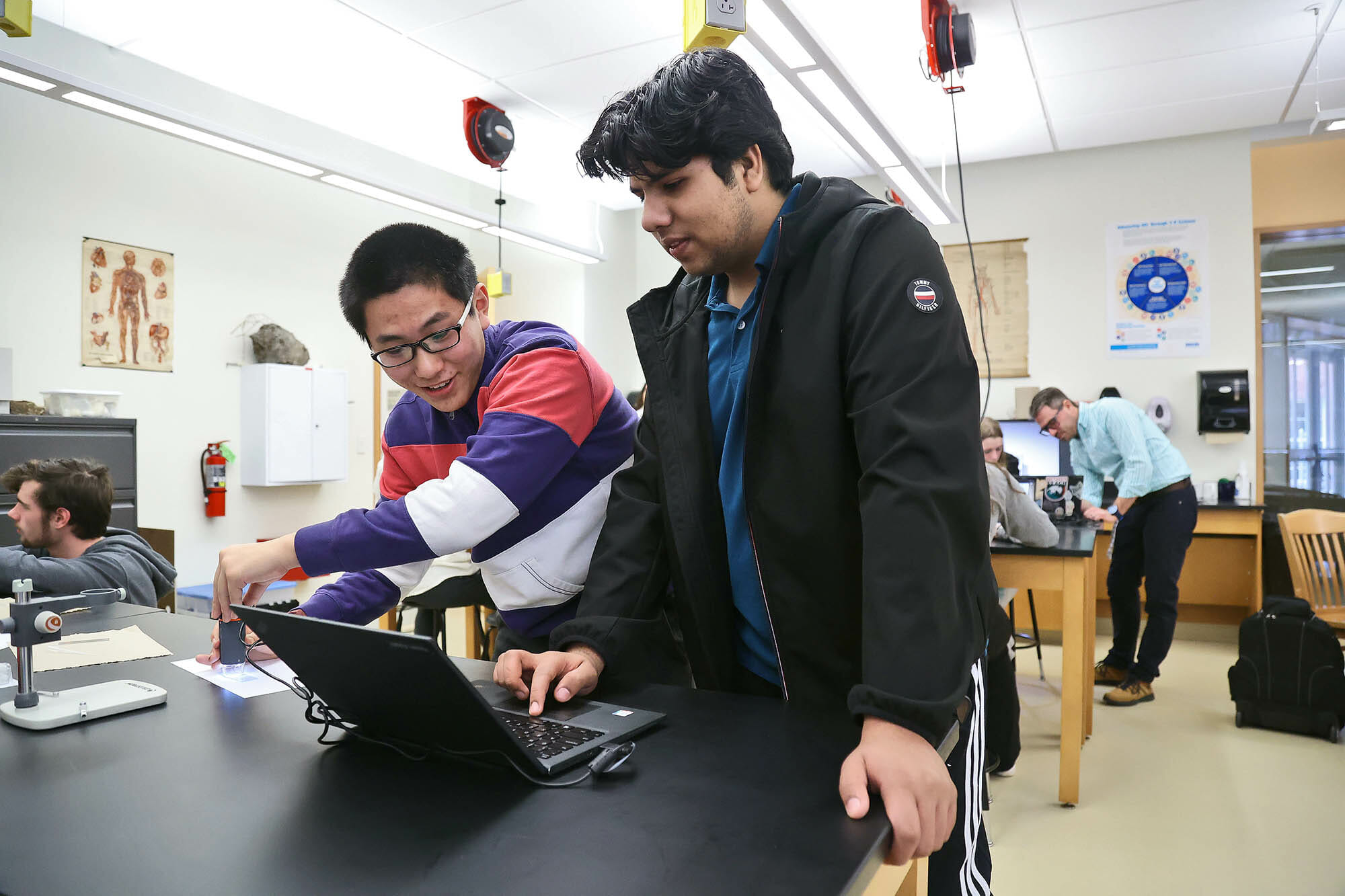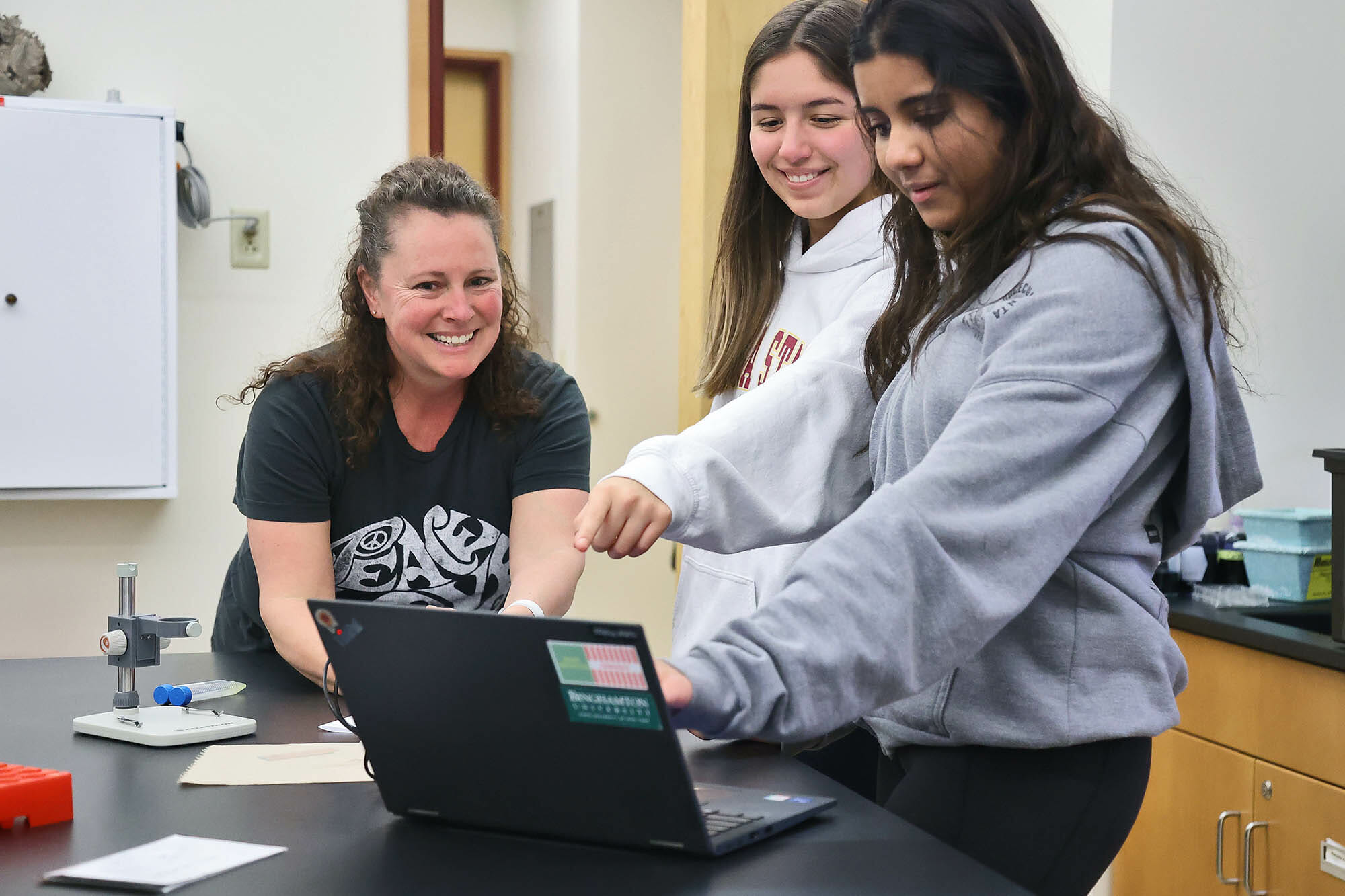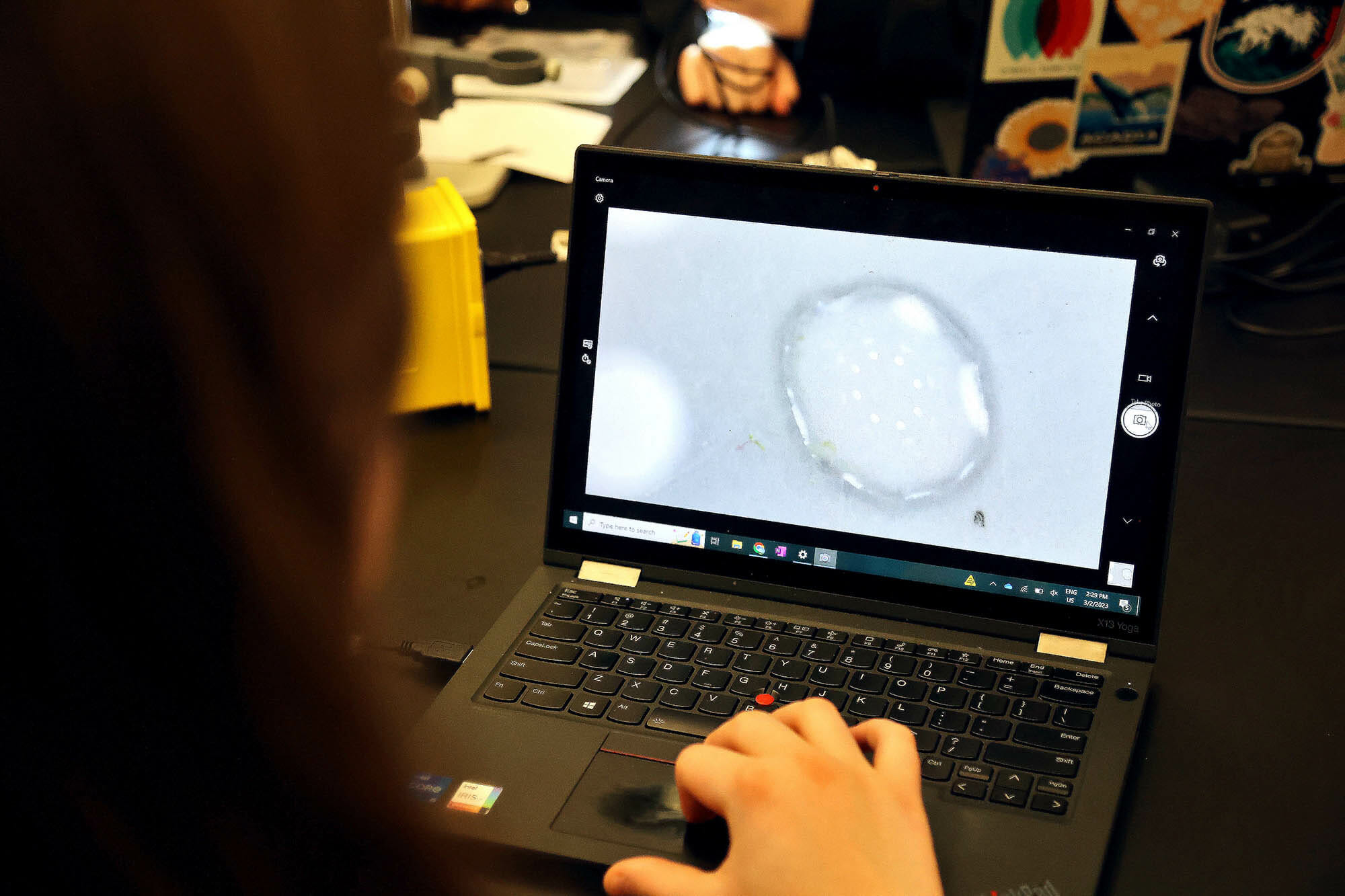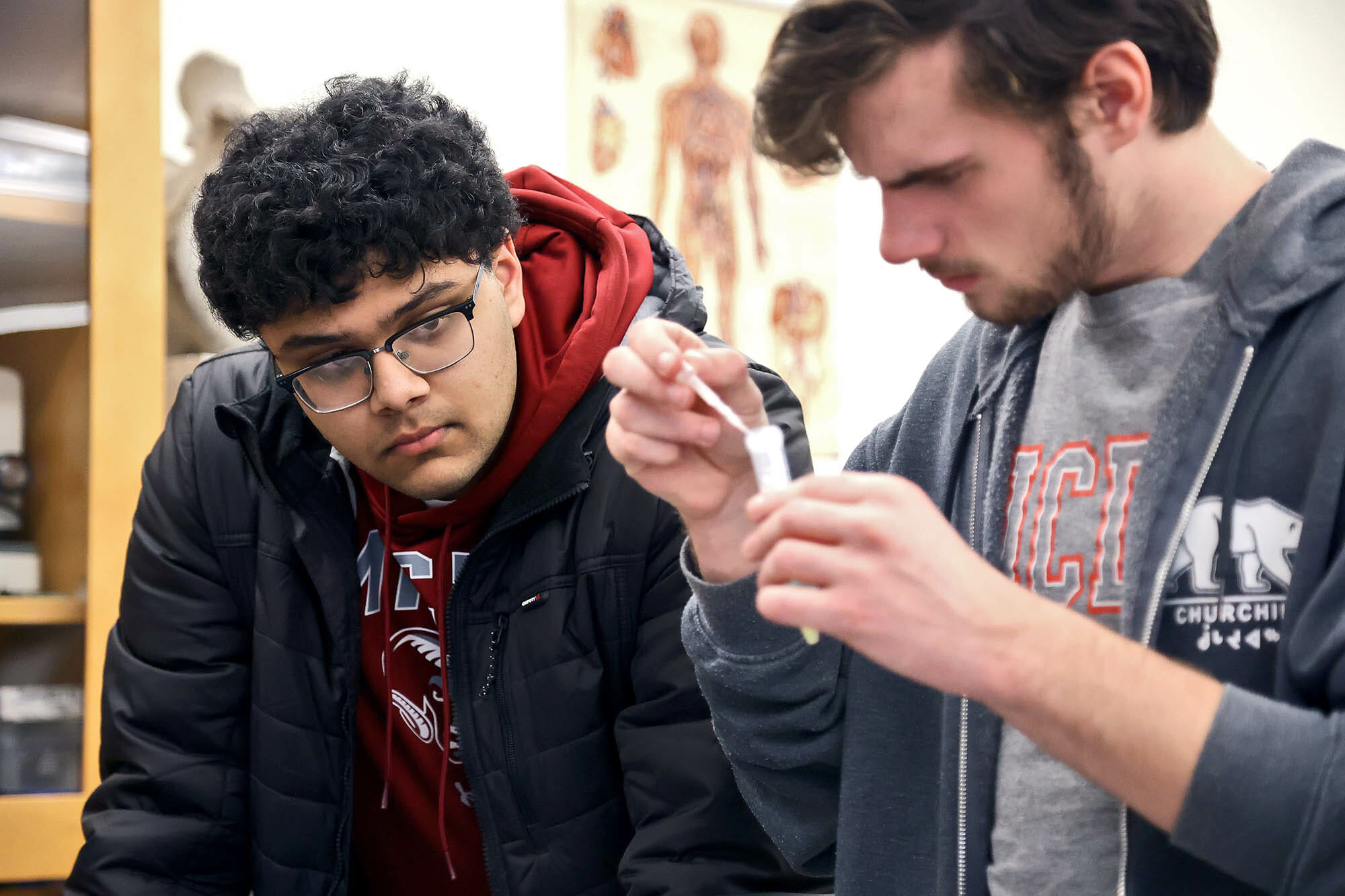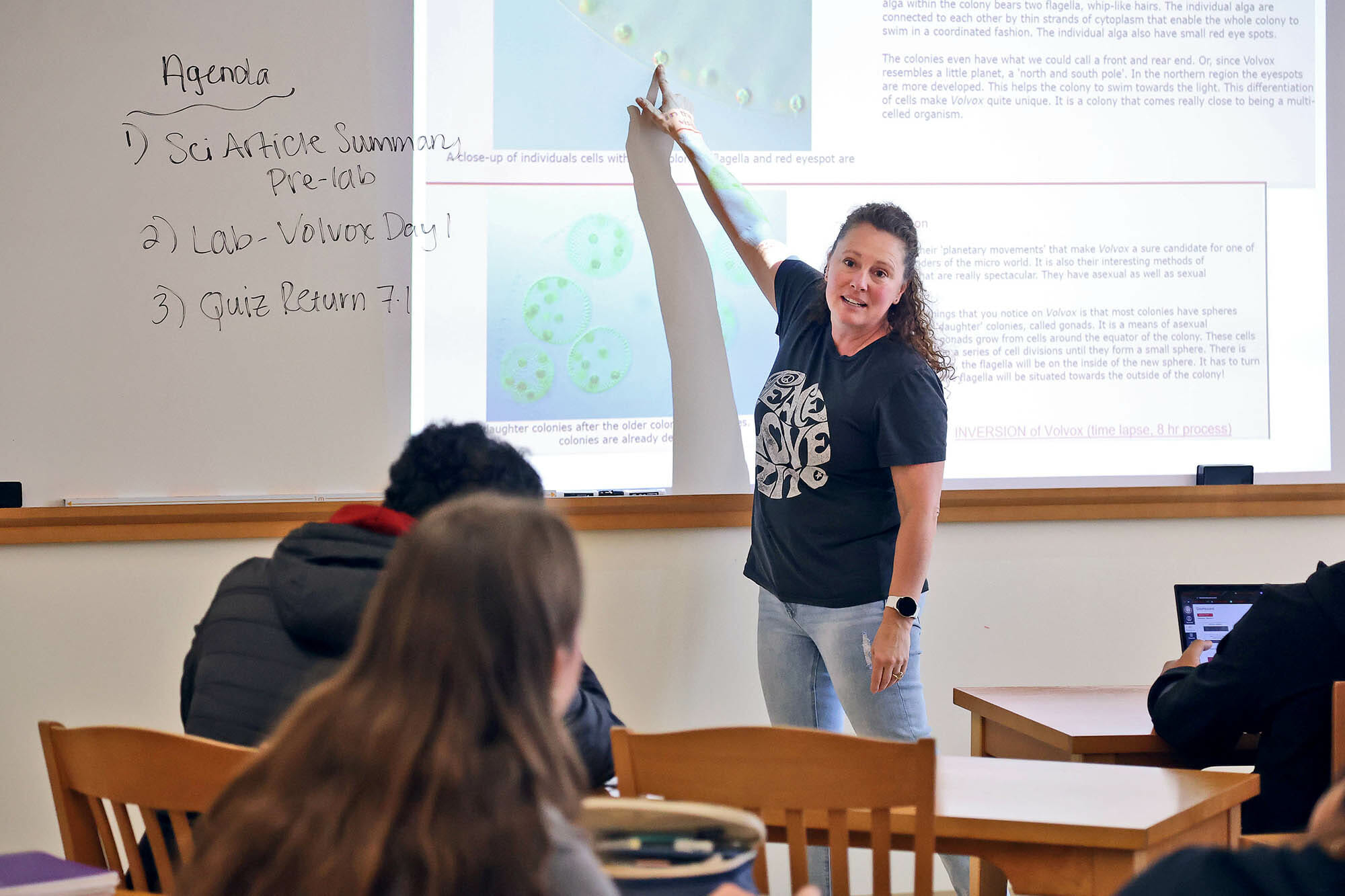Instead of looking through telescopes for signs of life in the form of little green men, students studying with Laura Bradford, Upper School Science Teacher, are looking through microscopes at little green algae to discover how life forms right here on Earth. Volvox is a multi-cell type of algae that has the important distinction of being closely related to its single-cell ancestor, making it ideal for examining how cells mutate, evolve, reproduce, and inherit DNA. “Bacteria lived for a billion years as unicellular—did just fine, very successful—why all of a sudden was there a shift to multicellularity? How was there that shift?” Bradford asks.
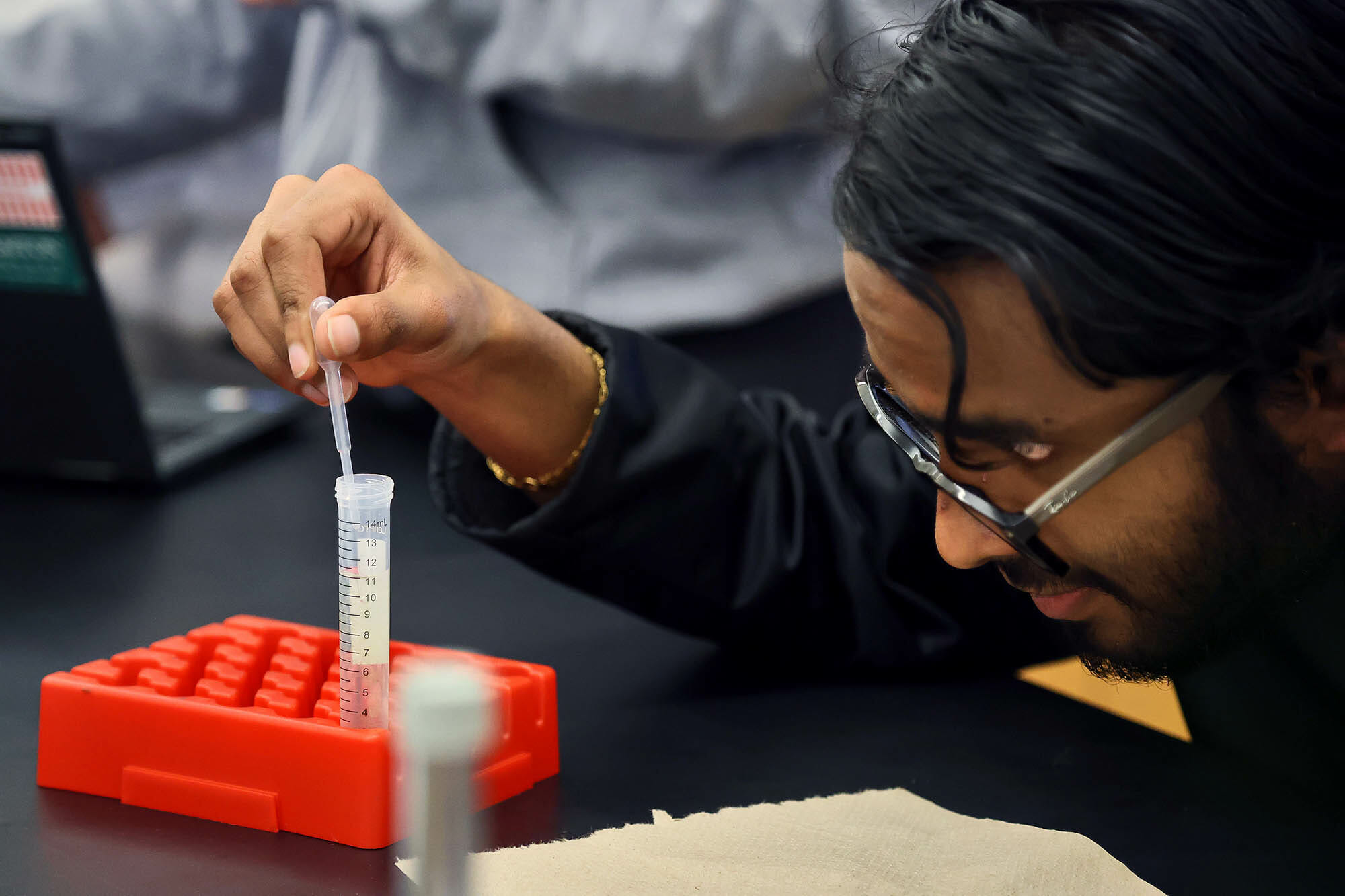
The goal of the volvox lab is to gain a better understanding of how multicellular life evolved. Studying the volvox evolution from a unicellular organism to a multicellular organism helps us to understand nature at its existence, but is also potentially a key to unlocking our understanding of all multicellular evolution on Earth.
MICDS students have been studying volvox in partnership with the Danforth Plant Science Center in Creve Coeur. The Danforth Center sends wild volvox samples collected from fresh water as well as volvox that they have mutated using UV light. Fabi Theodoro ’24 noticed those differences immediately, “We started off looking at these basic little algae particles, then moved into looking at the mutations. It’s really cool to see how there’s a physical difference between the regular parent particles versus the mutant particles.”
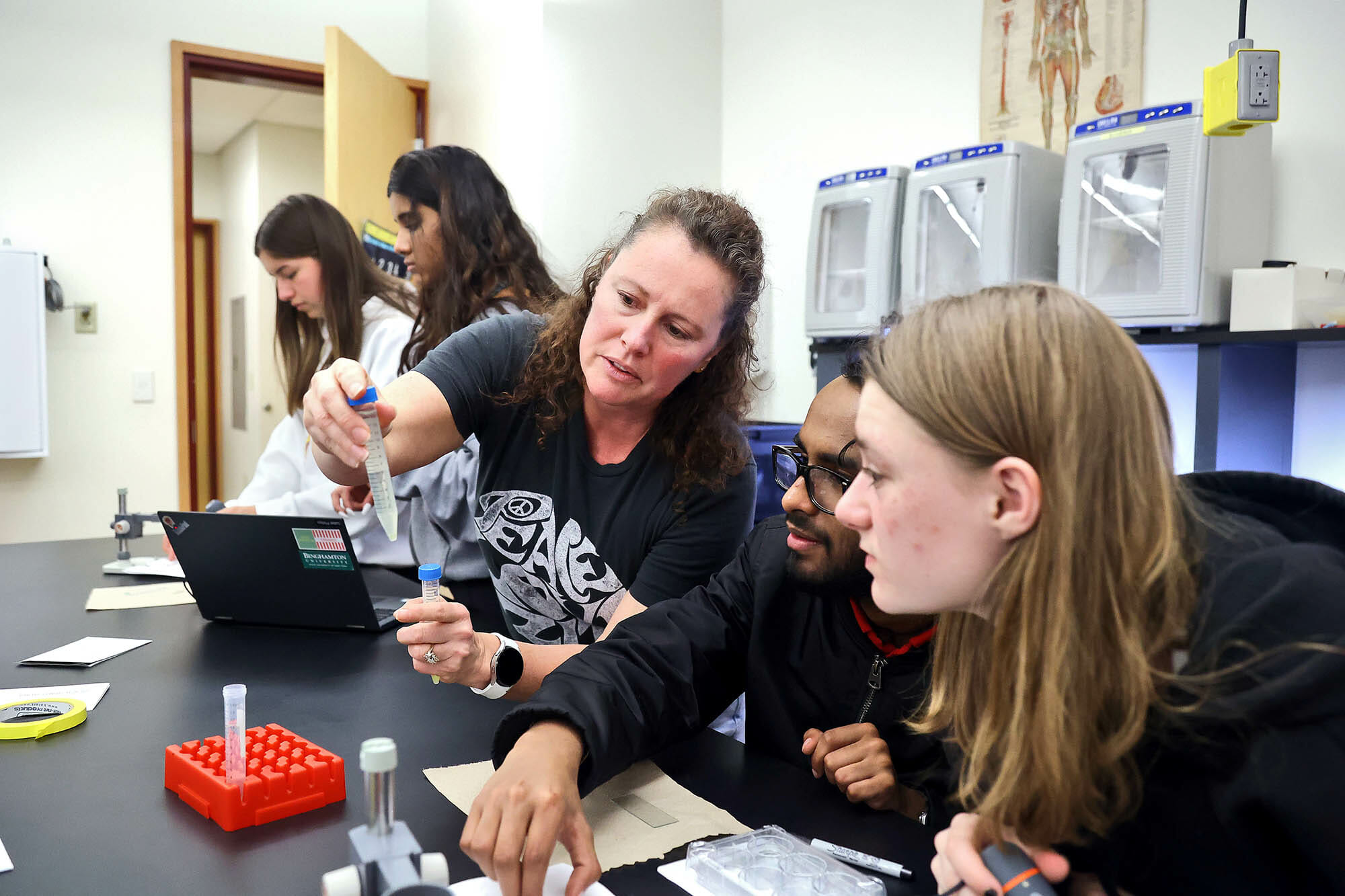
The physical differences are easy to see, but Theodoro and her classmates continued to investigate the underlying question of evolution. “When the Danforth Plant Science Center looked at the volvox DNA, they could easily see that they were very similar and that there were only a few mutations which resulted in one being multicellular and one being unicellular,” she explained.
In addition to its important role in studying evolution, volvox is an ideal specimen for lab work. “The volvox are a really good model organism to use because they’re easy to manipulate and they reproduce really fast,” says Maddie Sineff ’24. “We we are able to get results within five days of waiting—which was really good.” The speed with which the volvox can mutate and then reproduce, sharing new DNA with its offspring, is crucial. “It was really cool to see how the mutations were inheritable,” says Sineff. “We were able to see the mutations, and those mutations would be spots where we look for the divergence of multicellularity from unicellularity.”
So, when did the first human cells evolve from unicellular to multicellular? It is hard to know because, as Sineff explains, “The jump was so long ago, and it was such a large jump.” That jump, says Bradford, “…happened three billion years ago!” Luckily, “when volvox develops, it does things that are very similar to what our human embryos do when they develop,” Bradford says. During volvox cell reproduction, much like in human embryo cell development, volvox cells perform gastrulation, or flip themselves inside out. Bradford explains it this way, “So a scientist says, ‘If I can figure out what gene is responsible for making volvox do that, then there should be a comparable gene in our human cells that early in embryology causes gastrulation—a similar process.’”
Watching volvox cells develop in similar ways to those taking place in humans is fascinating. “It’s cool to see in person, under the microscope, happening in real life,” says Sineff.
For Bradford, the lesson is simple and vital. “We aren’t changing genes or studying on a genetic level, but we investigate, we study, and we read the primary research and then tell the world ‘this is why volvox matters.’”
Well done, Rams!
